- Home
- Andy McNab
Spoken from the Front Page 3
Spoken from the Front Read online
Page 3
I arrived in Afghanistan in early April 2007 as the company commander for 174 Provost Company 3 RMP and as the force provost marshal [FPM] for the UK task force. We deployed on 6 April after completing a six-month training period in the UK. When we first deployed, although my company headquarters was in Kandahar, I also had a detachment in Kabul and the majority of my troops were in Helmand province. I spent an awful lot of time on the road, so to speak, but actually in helicopters. If I had been collecting air miles I would have been doing very well! I was spending quite a lot of time in Helmand but about seven weeks into the tour I was also appointed as the SO2 ANP in addition to my company command and FPM role – this meant I was a staff officer responsible for the Afghan National Police, as part of a newly formed Security Sector reform cell.
I had never been to Afghanistan before. When you land on an RAF flight somewhere like that, all the lights get turned off and you have to put your helmet and all your body armour on whilst sitting in your seat on the plane; I think people who have never experienced that before feel a bit of trepidation landing like that – it all goes very quiet. When you arrive in Kandahar it's a huge, multinational camp. It was only half built at the time. A lot of things were still going on in terms of building but it had all the normal facilities that you get on a large army base whilst on a deployment, like little shops and cafés and stuff like that. Because it's an air base, it's a huge camp but you don't get to see anything of Kandahar itself, unless it's your job to patrol there.
Throughout May, I spent my time going between Kandahar, Kabul, Camp Bastion and Lashkar Gah. As company commander, I had to make sure that the brigade commander was getting the RMP support he needed, in the right places and at the right time, to support his operations. So it was just ensuring any planned operation was given RMP support at the right level and choosing the right characters for it, depending on what the operation was. One of our main roles out there was getting involved in detention issues, giving advice and guidance to commanders on the ground when they took an Afghan detainee. We had to ensure that that detainee was handled correctly and that the evidence to support the arrest was gathered in the right way. We would guide them [British soldiers] on how best to produce that evidence and what evidence would be needed to support the detainee being handed over to the Afghans.
It was a very difficult situation, bearing in mind that we were there to support the Afghans. We were not at war with them so any arrested locals were designated as detainees – they were not prisoners of war. Quite often during operations in Helmand – which involved other nationalities [such as the Americans] – if somebody was injured, they might be flown to the British medical facility in Camp Bastion, even if they were suspected to be Taliban. Then, by virtue of the fact that the British medical services were looking after them, they became a British detainee. So trying to gather the evidence against them was difficult because we were going up different military chains, different national chains.
But that was not our only role. We also acted as first responders where we could in the case of a UK death. Our Special Investigation Branch [SIB] colleagues are appointed coroners' officers: they gather evidence and investigate the death. Every UK death is treated as an alleged murder; the SIB gather evidence for the UK coroner on his behalf. So, as first responders to any UK death, we had to gather any evidence we could from the scene in terms of forensic evidence and witness statements. That is part of the RMP role, which can be difficult depending on where the incident has occurred and what the tactical situation is on the ground. There were some scenes [scenes of crime] that you simply couldn't get anywhere near because it was too dangerous.
We also police the [British military] force. As part of our traditional military-police role, we would investigate fights or thefts just as we would anywhere else.
In normal policing terms, it was relatively quiet because the troops were so busy and Afghanistan is 'dry': they weren't allowed to drink alcohol, and alcohol always fuels fights and the like, so, in terms of traditional policing, there was very little to do. The main thrust of our work, and certainly that of the SIB, was investigating the deaths of British soldiers but also supporting operations. We had thirty deaths throughout our six-month tour. The SIB were the prime investigators but we worked alongside them.
21 May 2006 [diary]
Flight Lieutenant Christopher 'Has' Hasler, DFC, RAF
A frustrating day. I've been here for a few days now and still haven't flown yet. I was a half-hour from getting airborne today, with all of my kit at the ready, when the aircraft I was taking over went U/S [unserviceable]. This seems to be a recurring problem, due perhaps to the amount of flying that we are demanding from the cabs.
With any luck, I will complete my TQ (theatre qualification) tomorrow. In any normal theatre [such as Iraq], a TQ would involve a rather sedate trip, including a local area familiarization and some dust-landing practice. In Afghanistan, however, the op tempo is such that there are no spare cabs or training hours available. Therefore, my TQ tomorrow will be six hours of operational training, flying the Paras into the very spot where the convoy was hit yesterday.
May
We did an op – Op Mutay. It was the Paras' first airborne assault. It was to the eastern village of Now Zad. We knew there were enemy forces there and we just wanted to kick the nest a bit and see what happened. It was broad daylight when we flew in a five-ship assault.
I prefer flying in daylight. You can't see the tracer [firing from the ground] and you can't hear it because the Chinook is so loud. If you're getting engaged, you don't know about it, and that's sometimes a bit better. And you can see where you're landing so there's less chance of a crash.
I was a flying officer at the time and therefore the co-pilot in charge of navigation. I was trying not to get us lost or land in the wrong place. We had decided to assault three compounds. When you're about half to three-quarters of a K away, you try to identify the landing spot. But if there's a shitload of compounds it's hard to ID the right one. It works sometimes but it's not an exact science. You have an aiming spot and you have to make sure your buddy [the other Chinook] can get in too. But for the last twenty feet or so, there's so much dust that you're blind. It's like flying in clouds. You just have to trust your techniques and hope you don't hit a big boulder or go into a ditch you hadn't seen, or something else goes wrong.
We were engaged before we landed but we didn't know about it. Then, as soon as the troops got off, there was incoming [fire]. We landed two aircraft in the back garden quite close to the compound to shock the hell out of them. The downdraught kicked up a huge amount of dust. It was my first real dust landing in anger with guys shooting at me. Everything was moving so quickly. You're aware straight away that you're under fire because you're on the same net [radio network] as the boys. Contacts were being called in but there was nothing we could do. Our ramp was down, offloading troops, but you just have to stay there until all the boys are out. At least the guys in the back [the two crew] have a mini-gun [a six-barrelled Gatling-style weapon] and two M60s [machine-guns] that they can hide behind and shoot back.
We could see the fire too but we had no idea where it was coming from. There were moments where I thought, Please hurry the fuck up, but you can't rush the boys because they're going as quick as they can. They don't want to stay on the helicopter any longer than they have to because they're vulnerable as well. The helicopter is a big, noisy target. It's no secret: we're most vulnerable to RPGs and small-arms fire when we're on our approach and when we're on the ground.
Once everyone was out, we took off. It was tense – maybe we're just pansies – but we were up again after just a few seconds. We went airborne and we held in pattern waiting for a pick-up call, or if there was any injury we'd go and get them. We listened on the nets for the call to come and get the injured but it never came. Once we were clear, the two Apaches went in and covered the boys [on the ground]. It was the first real helicopter assault on the enemy. We also
had stacks of fast jet up above us too ...
Once all was quiet – after maybe twelve hours – and everyone [the estimated thirty Taliban] was dead, we went to pick up the boys. And that's the way it should be. It was a really good day. Nobody got so much as a paper cut that day and they killed a lot of their boys [Taliban], so spirits were up. There had been a couple of really close calls, though. One of the troops took a round through his chest plate – through the magazines that were on his chest – and out the other side. Another guy took an RPG through his Land Rover – they weren't armoured then. And another guy got kicked by a cow – they killed the cow obviously! The dits [stories] afterwards were pretty fucking hilarious. It was great. There had been a large scope for things to go wrong, but it was great. We felt very good about things. It was a good eye-opener.
May 2006
Captain Nick Barton, DFC, Army Air Corps
My first ever contact was during Op Mutay. I was the wing aircraft [of two Apache helicopters] on my first tour. I was still a captain but only the flight 2IC [second in command]. For the first six weeks it seemed that, operating as a pair, one of the flights had been in the right place at the right time, had fired quite a lot, and had had all of the contacts. Not that you ever want to engage but that's what you're trained to do. For Op Mutay, we were the high-readiness pair and were only due to support the op if there was a problem with the deliberate tasking flight or if it endured past their crew duty.
As was customary we had read into the op: in outline a daytime op for a 3 Para air assault into Now Zad to target Taliban forces in a few known compounds. We launched 250 [men] in two waves of Chinooks, a fire-support group and all the rest of it into the badlands of Now Zad. At the time, we didn't know how bad they were. The op was starting to sound quite busy with reports of quite a few contacts and the supporting Apaches had been firing again. Since we were not dedicated to support specifically, it was likely that the same flight was going to have another busy day. We got stepped up. One of the aircraft had taken a couple of rounds and had to be shut down for servicing. Our pair complete, we replaced them and went up making best speed departing from the gravel pad at Bastion at approximately 10 a.m. There were various platoons on the ground in two rough groups and we split our pair up accordingly, one aircraft working to each of the two forward platoons. Ideally you are speaking directly to the JTAC [joint terminal air controller] of the lead company that wants your support.
As they [the Paras] were pushing up to this particular building, I thought: Shit, that's someone firing at them – just as they called, 'Contact' [over the radio]. I was seeing the muzzle flash from the guys [Taliban] behind a wall. Fortunately, I was visual with the firing point, something I now realize is a luxury as the firing point is often very hard to see. We were a bit too close to engage straight away and, it being my first contact, I took a bit of time to get in position, get clearance from the JTAC to fire 30mm and get accurate rounds on. We would have been at between two and two and half thousand feet, about one K from the target. Without a shadow of a doubt, there were two of them firing over a wall. They were firing an AK-47 [assault rifle], and possibly one had a PKM [machine-gun] with a slightly longer barrel. We were still operating everything under self-defence [Rules of Engagement]. They were probably 150 metres closing to 100 metres of where the friendlies [British forces] were. I was the aircraft commander in the front seat where you operate the sights and do most of the firing. You make sure the sight, TADS [targeting acquisition designating sight], is pointing accurately at the target; it's compensated for motion so it's nice and steady. You're zoomed in on the day TV camera as much as you can be. You lase [laser] for range, action the gun, check the range and, provided there are no other weaponeering messages, you fire. You watch for the fall of shot, adjust accordingly, and fire again.
Our first burst was perhaps fifteen to twenty metres from the target and we got cleared to fire again with a good rounds call from the JTAC. We could see the muzzle flashes so we put 120 rounds in and around the wall. They stopped firing but there was an orchard on the west side so we couldn't see any bodies or if we actually got them. We know that they no longer fired so it achieved its aim and the Para platoon swept through the area. Knowing what I know now, I could have paused a little bit more so that my initial burst was as accurate as it could have been rather than firing off axis. If you're running straight at them it's going to be more accurate and, hopefully, you can hit them before they start running. The best approach is to track them, then ambush them with 30mm rounds at the point of your choosing.
But it was good. We had four different radios going: an Ops Room radio, an inter-aircraft radio and two different frequencies speaking to the controller of two different company groups. So the divvying up of tasks within the cockpit can be tricky.
The contact went on for five or ten minutes. When it went quiet, we came back for fuel. But the Paras had done pretty well to clear through a pretty dodgy area. It was an eyeopener for everyone at that time. Later in the day, our pair [of Apache] went back up to co-ordinate the pick-up and recovery. The recovery was done with one or two Chinooks less than the drop-off to squeeze it in before we lost the light. Our role was to provide the continued cover as well as confirming the pick-up grid for the Chinooks. It was hot and the Chinooks were [each] picking up forty-four guys plus all their kit. By all accounts it was pretty sporty lifting out of the landing site with extremely limited power. Fortunately everyone got back [safely] and it was mission accomplished.
The temperature and the altitude make a real difference to how thin the air is and how hard the engines have to work to produce the same power. In the UK, lifting the same aircraft load, we would have been lifting with approximately 82 per cent power. In Afghanistan, in 45°C at 3,000 feet, we would probably be lifting at 93 per cent power. But that was our first big op and it felt good to be a part of it.
23 May 2006 [diary]
Flight Lieutenant Christopher 'Has' Hasler, DFC, RAF
It's been a long day. Into work for 0300 to start learning the ropes of DA [duty aviator]. I also had to do myriad jobs for the boss. Not that I minded, of course: the poor guy has shitloads on his plate at the moment and it probably helps him a great deal if someone reads his emails for him (although I'm sure he will reread them anyway).
We were all told there is a rescue op going on. A number of ANP [Afghan National Police] had been driven out of their town by the TB [Taliban] (10 kilometres west of Kajaki Dam). They are holing up in a safe-house, which is located in the middle of a steep valley. They do not have comms and it is unknown how many of them are still alive or if they have been overrun completely. The last report, which was received 4–5 hours ago, said they were down to 20 rounds apiece. We all know that the TB do not take PoWs.
Our mission is to take two Chinooks, supported by two AH [attack helicopters/Apaches], one with two Paras and one empty. The Chinny with the Paras (my aircraft) will land and offload the troops top cover. The Paras will move forward and recce the safe-house. It will be filled with either ANA [Afghan National Army] or with TB. If things run smoothly, the second CH [Chinook] will be called in to pick up the ANA, or bodies of. If things go badly and the Paras run into a contact, we will try to recover them while the Paras rain down as much lead as poss.
It is now 1640Z and I am supposed to be up at 2200Z for a 0002 lift. As I was leaving the HQ a new piece of int [intelligence] came in. There are RPG-armed troops amassing in the hilltops, apparently with the aim of shooting down a Chinook. I'd better get my head down. I don't want to fall asleep when the bullets start coming!
24 May
It wasn't long after I finished writing the last entry that I was awoken and told that the op was still on. With time only to clean our teeth, we grabbed our kit and made for the HQ. After a quick brief, we got ourselves to the aircraft, flashed them and flew to Camp Bastion, all while it was still dark. The sun started to rise halfway over the red desert; five minutes later it was 32°C at 200 f
t.
At Bastion, all the players gathered for a mission brief given by Maj Will Pike, OC [officer commanding] A Cy [Company]. The mission had changed slightly in that both CHs [Chinooks] will now be carrying troops and landing simultaneously. Int also hadn't nailed down a specific location for the police chief and his men. Instead we had three 'probable' grids which would be confirmed by the overhead Apaches.

 Get Me Out of Here!
Get Me Out of Here!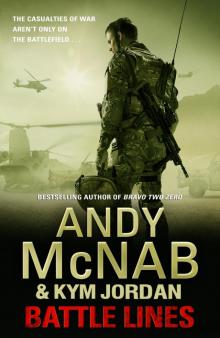 Battle Lines
Battle Lines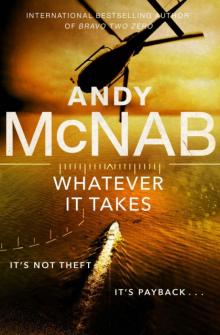 Whatever It Takes
Whatever It Takes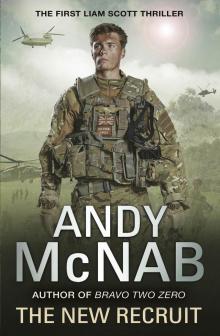 The New Recruit
The New Recruit War Torn
War Torn Brute Force
Brute Force Crossfire
Crossfire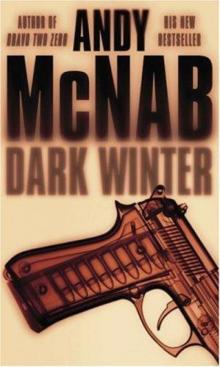 Dark Winter ns-6
Dark Winter ns-6 The Grey Man
The Grey Man Spoken from the Front
Spoken from the Front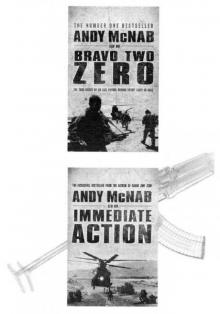 Meltdown
Meltdown Recoil
Recoil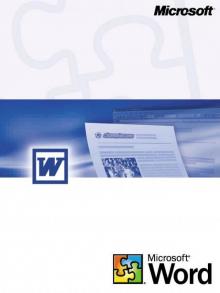 Nick Stone 1 - Remote Control.
Nick Stone 1 - Remote Control.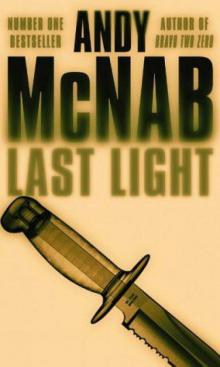 Last Light ns-4
Last Light ns-4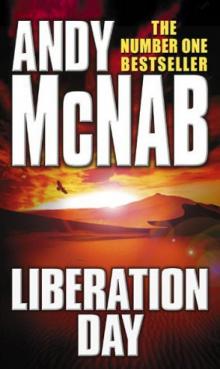 Liberation day
Liberation day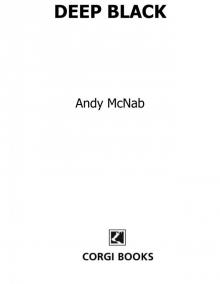 Deep Black
Deep Black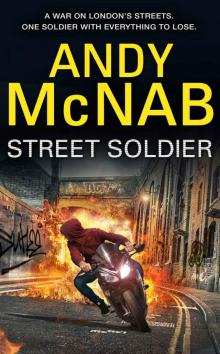 Street Soldier
Street Soldier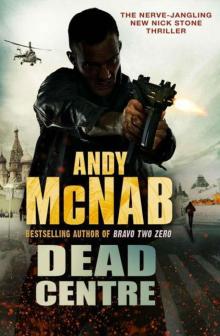 Dead Centre ns-14
Dead Centre ns-14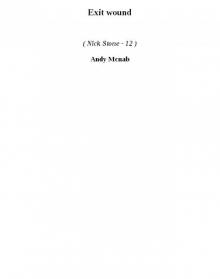 Exit wound ns-12
Exit wound ns-12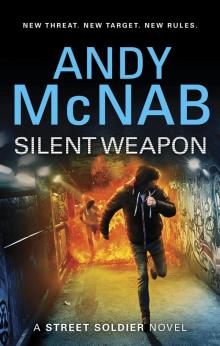 Silent Weapon
Silent Weapon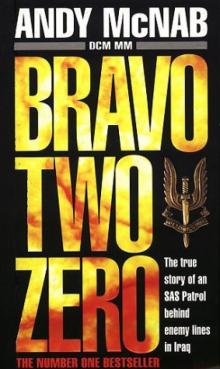 Bravo two zero
Bravo two zero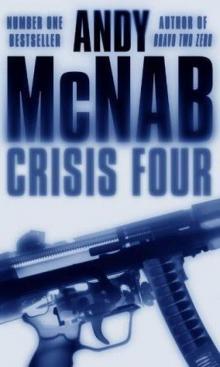 Crisis Four ns-2
Crisis Four ns-2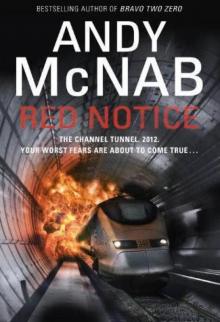 Red Notice
Red Notice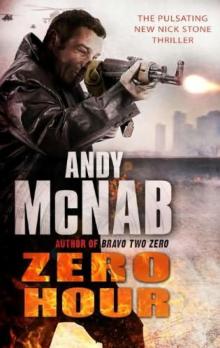 NS13 Zero Hour
NS13 Zero Hour Firewall
Firewall Last Light
Last Light Aggressor
Aggressor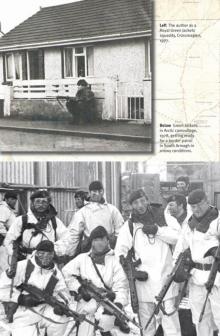 Seven Troop
Seven Troop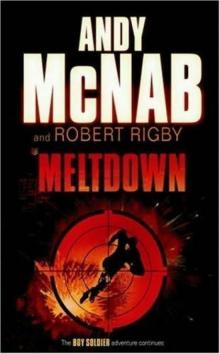 Meltdown bs-4
Meltdown bs-4 The Grey Man (quick reads)
The Grey Man (quick reads)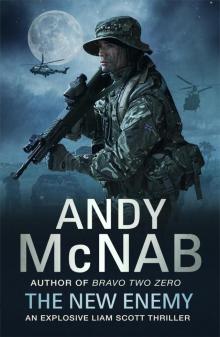 The New Enemy
The New Enemy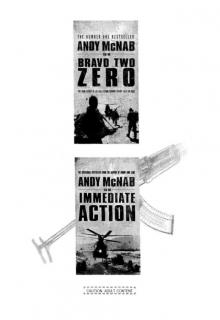 Avenger
Avenger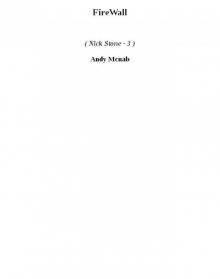 FireWall ns-3
FireWall ns-3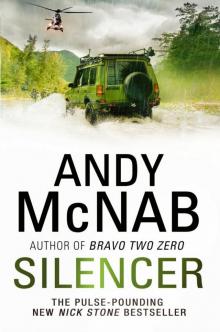 Silencer
Silencer Last Night-Another Soldier…
Last Night-Another Soldier…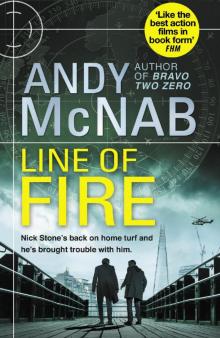 Line of Fire:
Line of Fire: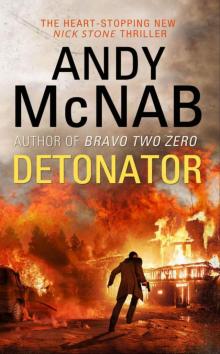 Detonator
Detonator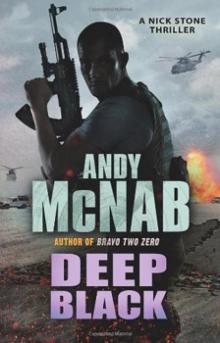 Deep Black ns-7
Deep Black ns-7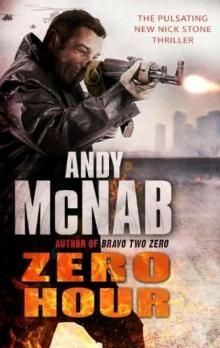 Zero Hour (2010) ns-13
Zero Hour (2010) ns-13 Brute Force ns-11
Brute Force ns-11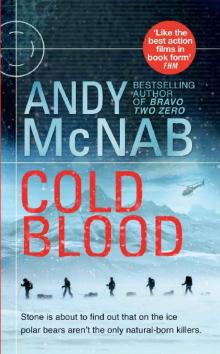 Cold Blood
Cold Blood Terminal Velocity
Terminal Velocity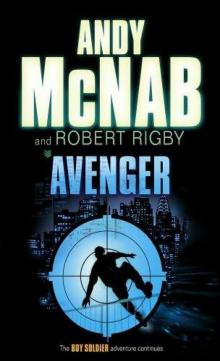 Avenger bs-3
Avenger bs-3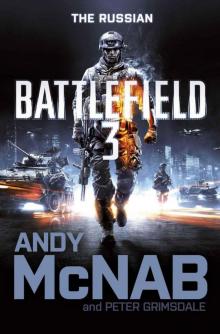 Battlefield 3: The Russian
Battlefield 3: The Russian DropZone
DropZone Zero Hour
Zero Hour NS13 Zero Hour (2010)
NS13 Zero Hour (2010)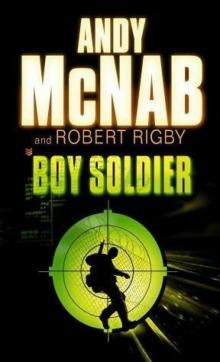 Boy soldier bs-1
Boy soldier bs-1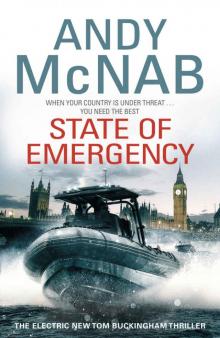 State Of Emergency: (Tom Buckingham Thriller 3)
State Of Emergency: (Tom Buckingham Thriller 3)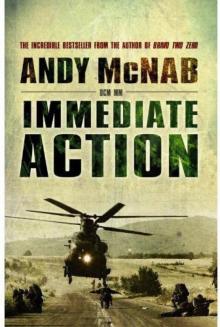 Immediate Action
Immediate Action The New Patrol
The New Patrol Crisis Four
Crisis Four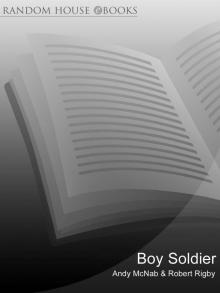 Boy Soldier
Boy Soldier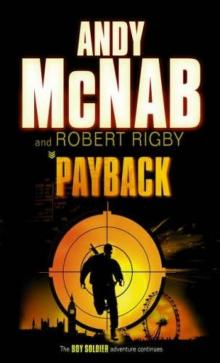 Payback bs-2
Payback bs-2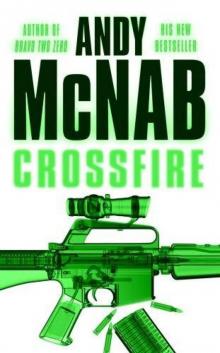 Crossfire ns-10
Crossfire ns-10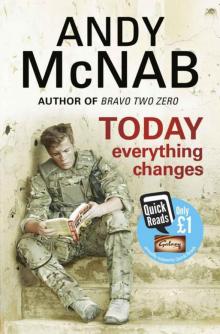 Today Everything Changes: Quick Read
Today Everything Changes: Quick Read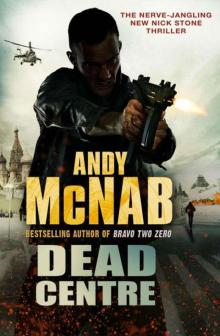 Dead Centre
Dead Centre For Valour
For Valour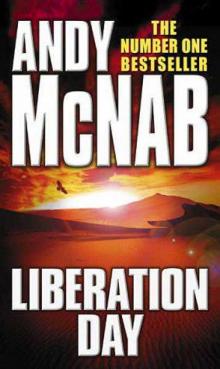 Liberation Day ns-5
Liberation Day ns-5 Aggressor ns-8
Aggressor ns-8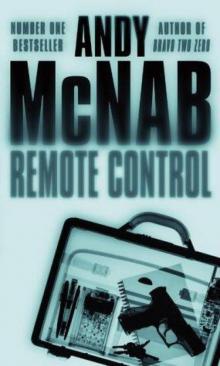 Remote Control ns-1
Remote Control ns-1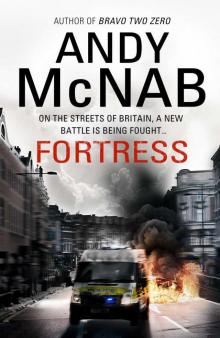 Fortress
Fortress On the Rock
On the Rock Dark Winter
Dark Winter